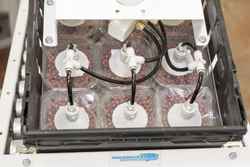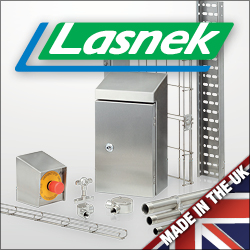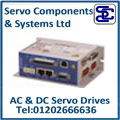
Posted to News on 6th Oct 2014, 14:59
Cartesian - taking the sting out of automation investment
For automation first timers, taking the leap and investing in a robotic application can be fraught with decisions. Talk of improved quality and increased throughput can be overshadowed by the capital costs and worries about reorganising factory floor layouts. At the PPMA Show, Pacepacker Services, together with technology partner Festo, unveiled a newly designed twin-axis Cartesian style pick-and-place robot.

The project came about when Pacepacker was approached to build a robust, reliable product for a food automation application. Pacepacker purchased Festo components to incorporate into the new design. Because the system is constructed from standard off-the-shelf products, such as belt-drive/ball screw axes, servo-motors, drives and standard grippers, the cost of this Cartesian robot can be much lower than traditional five and six axis robots.
Paul Wilkinson, Pacepacker's Business Development Manager, says: "Cartesian systems allow manufacturers to enter the automation sector with a lower initial investment in both equipment and training. The cost of any system will greatly depend on the footprint, payload and speed required. The big question is: "What is the best solution for each enquiry we work on?' As we have the widest range of pick and place solutions in the UK, we are able to make sure each integration is based on the technology and components required. Other providers may have fewer alternatives to offer and specify a system that is overpriced, excessively large and capable of high speeds not required. The lowest cost Cartesian system could be as little as 1500 but could be as high as 50,000 if the footprint is very large and the payload high."
The Cartesian designed by Pacepacker can be re-programmed for a diverse range of tasks and differing packaging sizes, improving the flexibility of the overall system. Paul explains: "The system has two axes of movement as standard and is a good typical solution for most pick and place operations where packaged items are placed into distribution packaging, like cardboard boxes, cases, retail trays and trolleys."
Additional axes can easily be added to create more complex systems. Paul explains: "One advantage of the modular system is that you can fully mix and match the technologies. If complex motions are needed in X and Y and only up and down movement in Z, then you can opt for two axes of electrical motion and a single Z axis in pneumatic, reducing the cost and increasing simplicity. Motion control can be provided via complex motion co-ordinators, allowing full interpolated path control, right down to point to point pick and place for the simplest and most cost-effective solutions."
Simple technology to solve complex tasks
Buy-in from operators and machine setters can be better with Cartesian systems than with robots, as they do not feel threatened by complex technology and tend to work closer with management to be early adopters of automation projects. Nigel Dawson, product marketing manager at Festo, comments: "Cartesian systems allow the first step to full automation by using simple technology to solve complex and time-consuming tasks. They use simple products and technology to automate lines without the need for complex robots, and the operators can clearly see the advantages." The equipment used is based upon fully standard and well-known technology, making spares more readily available and reducing the need for high skills and training within maintenance departments.
Energy efficiency, adds Nigel, is also a key driver for such technology: "Serial kinematic robots are often moving very high masses for very little payload - the actual moving part of the robot weighs many times what it is actually moving. Parallel kinematic systems such as the Festo H and T handler offer high mass capability, whilst reducing the actual weight of the moving robot. Imagine using a smart car to transport a single person 500 miles then compare the energy used with a coach transporting the same person the same distance."
For manufacturers looking to invest in automation, concerns over ROI are eliminated. Productivity is increased as Cartesian systems do not take breaks or holidays and do not get sick, ensuring the machine is running to its optimum output. Energy efficiency is improved over traditional robots. Because the initial investment in equipment is kept to a minimum, the payback period on a Cartesian can be much lower than other forms of automation. The spares needed to keep a Cartesian system running are both cost effective and simple to obtain, as they are standard parts used in many applications, so the cost of ownership is therefore reduced. Finally, the quality of the output from a Cartesian can be guaranteed, ensuring scrap and wastage is reduced, increasing the return on investment even further.
Paul Wilkinson concludes: "The Cartesian range of systems that we integrate from Festo is just part of the jigsaw when it comes to implementing an effective pick-and-place solution. It gives us the ability to enhance our product offering from low-tech, low-speed through to high-speed delta robots, so that each installation has the most suitable solution."
For more information about Pacepacker's twin-axis Cartesian style pick-and-place robot, please visit www.pacepacker.com.
X
X
GLOBAL


















